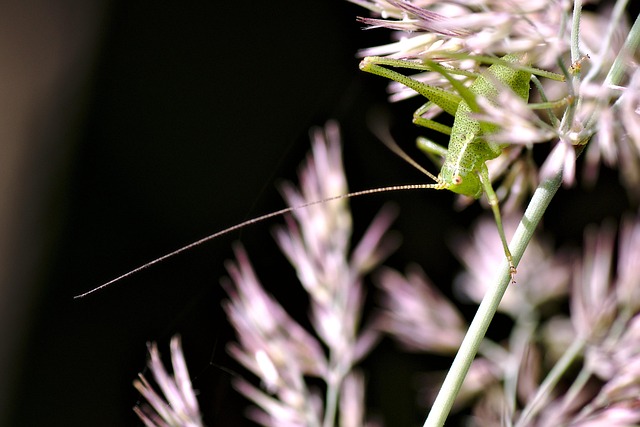Boxelder bugs thrive in specific habitats, making understanding their wintering grounds and feeding behavior crucial for implementing effective, eco-friendly solutions. Landscaping strategies like diverse vegetation, natural barriers, and strategic planting of aromatic plants can deter these pests. Maintaining healthy plants through proper pruning, soil management, and organic fertilizers further reduces bug populations. Responsible waste management practices contribute to a healthier ecosystem by preventing bugs from finding shelter. By combining these eco-friendly boxelder bug solutions, homeowners can create an unappealing environment for these insects while preserving local ecosystems.
Landscaping isn’t just about aesthetics; it plays a pivotal role in mitigating pest problems, particularly with boxelder bugs. These insects, known for their bustling presence during fall, thrive in specific habitats, making strategic landscaping a powerful tool in their control. This article delves into the intricate relationship between nature’s design and bug management. We’ll explore eco-friendly practices, understanding these pests’ habitat preferences, and long-term prevention strategies to help you embrace effective, sustainable boxelder bug solutions.
Understanding Boxelder Bugs and Their Habitat
Boxelder bugs, scientifically known as Boisea trivittata, are a common pest in many parts of North America. These insects prefer habitats that offer both shelter and food, with a particular affinity for boxelder trees (Acer negundo). In urban settings, they often find refuge in yards and parks where these trees grow abundant. Understanding their habitat is crucial when seeking eco-friendly boxelder bug solutions.
The bugs spend the winter months in sheltered locations, such as beneath bark, in hollows, or even in homes, and emerge in spring to feed on plant sap. Female bugs lay eggs on tree branches, and the resulting nymphs continue the feeding cycle. Landscaping can play a significant role in disrupting their habitat and reducing their population. By strategically planting diverse vegetation and creating natural barriers, homeowners can minimize boxelder bug problems while maintaining an eco-friendly approach.
The Benefits of Landscaping for Bug Control
Landscaping offers a natural and eco-friendly approach to bug control, especially for pesky insects like boxelder bugs. By strategically designing and maintaining your outdoor space, you can create an environment that discourages these pests from invading your home or property. Plants play a crucial role in this process; some species naturally repel boxelder bugs due to their strong scents or unappealing textures. For instance, aromatic herbs like lavender, mint, and rosemary are known to deter these insects, adding a delightful fragrance to your garden while keeping bugs at bay.
Additionally, landscaping can provide physical barriers against boxelder bugs. Dense, native vegetation around the perimeter of your property acts as a natural buffer zone, making it harder for bugs to access buildings. Proper tree placement and shade creation can also reduce areas where these insects thrive during warmer months. Such eco-friendly solutions not only minimize the need for chemical interventions but also promote biodiversity and enhance the overall aesthetic appeal of your landscape.
Eco-Friendly Practices to Reduce Infestations
In the quest to minimize boxelder bug infestations, adopting eco-friendly practices offers a sustainable and non-toxic approach. One effective strategy is maintaining a well-landscaped yard. Native plants and shrubs create a natural barrier by attracting beneficial insects that feed on boxelder bugs, disrupting their life cycle. Pruning trees and removing dead wood reduces hiding spots and food sources for these pests. Additionally, proper soil management and the use of organic fertilizers promote healthier plants, making them less susceptible to bug invasions.
Eco-friendly boxelder bug solutions also involve responsible waste management. Regularly cleaning up fallen leaves and twigs prevents bugs from finding shelter and breeding grounds. Composting organic matter reduces the risk of attracting pests while improving soil health. These practices not only minimize boxelder bug populations but also contribute to a healthier, more balanced ecosystem.
Effective Strategies for Long-Term Prevention
To implement effective, long-term strategies for preventing boxelder bugs, landscaping plays a crucial role in creating an environment that discourages their presence. Planting native species that are less attractive to these insects is one eco-friendly approach. Native plants not only support local ecosystems but also tend to have natural defenses against common pests, reducing the need for chemical interventions. Additionally, maintaining a buffer zone around structures with dense, diverse vegetation can serve as a physical barrier, hindering bug access and movement.
Regularly trimming trees and shrubs keeps the landscape tidy and reduces hiding spots for boxelder bugs. Removing fallen leaves and debris promptly eliminates potential breeding grounds, disrupting their life cycle. Furthermore, incorporating physical repellents like certain scents or natural oils into landscaping can offer long-lasting protection without harming the environment. These strategies collectively contribute to a more sustainable solution, providing both short-term relief from boxelder bug infestations and long-lasting prevention for future occurrences.
By understanding the habitat and behavior of boxelder bugs and implementing strategic landscaping techniques, homeowners can effectively minimize these pest issues. Eco-friendly practices, such as plant selection, proper spacing, and natural repellents, offer sustainable boxelder bug solutions. Combining these methods with long-term prevention strategies ensures a more harmonious coexistence with these insects, promoting a balanced and healthy outdoor environment.
